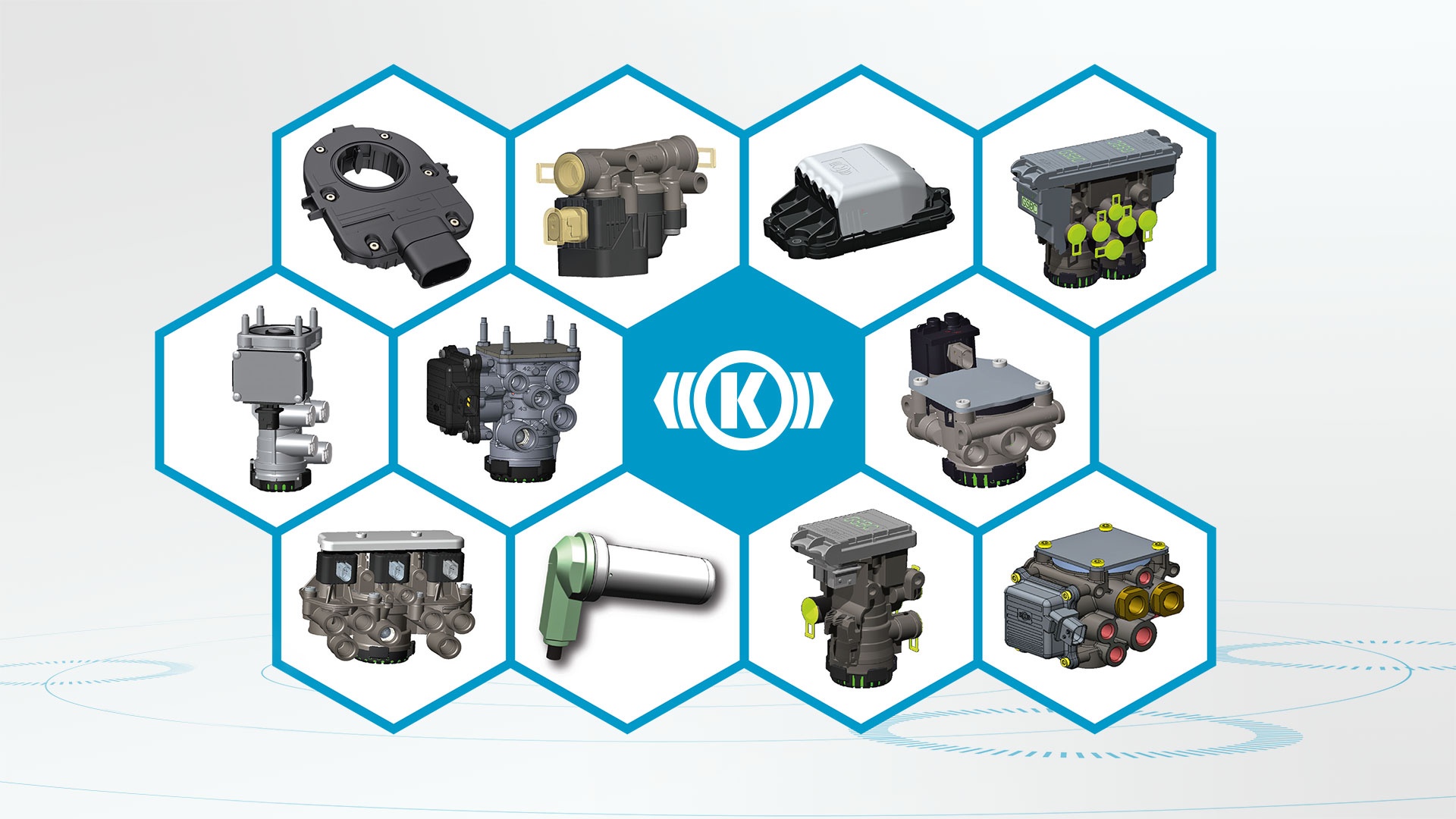An international team of around 100 engineers at Knorr-Bremse is working on a major project for a new brake control system for trucks. The result is known as Global Scalable Brake Control (GSBC). Not only can it be perfectly adapted to a wide variety of customer requirements, it also lays the groundwork for automated driving.
"No one can see the future in a crystal ball, but you can prepare very well for certain scenarios," explains Dr. Patrick Mattes, Head of the Center of Competence Brake Control Truck. "This is a major challenge for all truck manufacturers when developing new models." After all, they want to produce their model series for around ten years without having to make any serious changes to the architecture. Manufacturers therefore stand to benefit when they prepare their vehicles as well as possible for future system changes.

The crucial point is that GSBC lays the groundwork for the advent of automated driving. When the time comes, manufacturers will no longer have to change the system layout of the vehicle; all they need to do is deploy the appropriate components.
Dr. Patrick Mattes – Head of the Center of Competence Brake Control Truck
One brake control for various systems
Knorr-Bremse's new Global Scalable Brake Control (GSBC) makes a decisive contribution in this respect. "We are pioneers in automated driving systems," says Frank Schwab, who is responsible for the GSBC technology. "Our new brake control system is easier to embed in the interplay of different vehicle systems and saves the manufacturer a great deal of work when it comes to the application and installation in the chassis."
The ongoing development of truck brake control is one of the company's major international projects. Around 100 people make up the various teams that have been working on GSBC worldwide since 2016. "We are now entering the decisive phases of the project," says Szabolcs Megyeri, Project Manager GSBC. "The pilot project with the Traton Group, which consists of the VW, MAN and Scania brands, is planned for the end of 2021."
Cross-border cooperation
In addition to the core team at the German site in Schwieberdingen, experts in Hungary and India are handling many of the details. Patrick Mattes also points out the cooperation with colleagues from Bendix in the USA, who are already working on the next GSBC project with Volvo. "The project work between Europe and North America is going extremely well."
What does Global Scalable Brake Control actually do?
What exactly is GSBC all about? Jan Mayer, Director Program Management Brake Control, begins by explaining the basic task of brake control. "The driver steps on the brake pedal, electronic signals tell the brake control system to send compressed air through the lines to the brake calipers, which then clamp down on the brake discs. This is a highly complex operation, of course, with many sensors, actuators and controls working in concert to bring a commercial vehicle to a safe standstill in every scenario."
Currently, this task is performed by the electronic braking system EBS, which combines many different functions. Development of the next generation of brake control, GSBC, follows on directly from the current EBS 7 and the anti-lock braking system (ABS) 8 and combines these two previously separate system environments.
Szabolcs Megyeri highlights the stand-out feature of the platform: "GSBC is not a single device, but consists of many individual components." In addition to the control unit, the manufacturer can install various actuators, sensors and modulators from the new modular system, depending on which functions are required. "This is a huge advantage for GSBC. It is scalable for different vehicles and markets." Truck manufacturers can thus implement all the desired functionalities of EBS and ABS using an appropriate combination of modules.

Customers save money
A further benefit for manufacturers is the placement of the control unit low down in the chassis of the truck instead of in the cab, as in previous products. The number of individual components is also reduced. "For example, the so-called yaw-rate sensor, which detects the risk of skidding, is now integrated into the control unit," says Frank Schwab. "This eliminates the need for extra cables and plugs. The other installation positions, cable runs and pneumatic lines are also simplified and standardized, which means less adjustment is required – whether in a standard ABS system or an EBS with many additional functions.
Besides requiring fewer components and thus cutting costs, GSBC uses new microcontrollers that boost performance with even faster response times.
The future of trucks: automated driving
For Patrick Mattes, however, the crucial point is that GSBC lays the groundwork for the advent of automated driving. "When the time comes, manufacturers will no longer have to change the architecture of the vehicle or the system layout; all they need to do is deploy the appropriate components."
The team members across Europe and North America are already thinking way ahead into the future. Jan Mayer explains that the subsequent generation of GSBC will combine even more components into mechatronic units. "The higher degree of integration translates into further savings for the customer. We plan to begin series production at the end of 2023," with the next stage of development, rGSBC, starting at the same time. "This places us at the foundation level of automated driving," says Mayer. The "r" stands for redundancy, i.e. the ability to switch seamlessly to a replacement system in the event of a system failure. The Truck Motion Controller will also be integrated into rGSBC, a kind of operating system that can control the vehicle with the aid of additional sensors such as cameras, lidar and radar systems.
A product for all truck markets
Customer interest is already very high, reports the GSBC management team. "Many managers of international truck manufacturers are taking up our invitation to visit the test track in Boxberg and the winter testing in Arjeplog, Sweden." They are keen to learn about an efficient solution that will allow them to switch to rGSBC in a few years without having to redesign anything on the vehicle.
The core team in Schwieberdingen sees a great deal of potential. "GSBC is a global platform that enables Knorr-Bremse to actively contribute to and benefit from the transport solutions of the future."
In particular, the German plant in Aldersbach assumes a pioneering role in the production of the various components. "We then manufacture worldwide, in North and South America, in Europe, in India and in China. That's one more reason why GSBC bears 'Global' in its name."

